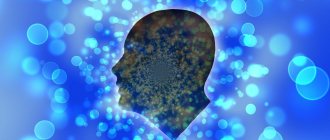Personality structure. Personality is a stable system of completely individual, psychological, and social characteristics. Psychology, as a science, considers only the psychological characteristics that form the structure of personality. The concept and structure of personality is a controversial issue among many psychologists; some believe that it cannot be structured and rationalized in any way, while others, on the contrary, put forward new theories of personality structure. But still, there are certain characteristics that, one way or another, exist, and they are worth describing.
Character is the most important component of personality; it demonstrates all a person’s relationships in the world. Attitude to other individuals, to some object, situation and, in general, to the whole reality that surrounds him.
Temperament is a manifestation of the dynamic properties of human mental processes.
Abilities are a set of individual typological characteristics that contribute to the manifestation of success in a certain activity.
The orientation of a person determines her inclinations and interests in a particular subject of activity. Volitional qualities reflect the readiness at some point to prohibit oneself, but to allow something.
Emotionality is an important component of the personal structure; with its help, a person expresses his attitude towards something through a certain reaction.
Human motivation is a set of motives that determine human behavior. Social attitudes and values play a major role in a person. It is them that society perceives in the first place and determines its attitude towards the individual. This list of characteristics is not exhaustive; in different theories of personality, additional properties can be found, highlighted by different authors.
Psychological structure of personality
Personal structure in psychology is characterized through certain psychological properties, without particularly affecting its relationship with society and the entire world around it.
Personality structure in psychology briefly. There are several components in personality psychology.
The first component of structure is directionality. The focus structure covers attitudes, needs, interests. One component of orientation determines human activity, that is, it plays a leading role, and all other components rely on it and adapt. For example, a person may have a need for something, but, in fact, he has no interest in a certain subject.
The second component of the structure is capabilities. They give a person the opportunity to realize himself in a certain activity, achieve success and new discoveries in it. It is the abilities that constitute a person’s orientation, which determines his main activity.
Character, as a manifestation of personality behavior, is the third component of the structure. Character is the property that is most easily observed, so a person is sometimes judged simply by her character, without taking into account abilities, motivation and other qualities. Character is a complex system that includes the emotional sphere, intellectual abilities, volitional qualities, and moral qualities that mainly determine actions.
Another component is the self-regulation system. Self-control of a person ensures proper planning of behavior and correction of actions.
Mental processes are also part of the personality structure; they reflect the level of mental activity, which is expressed in activity.
Definition of personality
At the moment, there are several universal, most common concepts:
- Personality is the difference between one person and another in terms of internal qualities, which comprise individuality. A broad understanding that includes the characteristics of an individual’s psychological structure and the structure of his personality. That is, everyone is considered as an individual.
- Personality is a combination of personal and social roles. Such an average understanding of personality implies the need to be in society. That is, only society can provoke personal growth. The author of this definition is George Herbert Mead, an American psychologist. The definition is also close to Adler, who believed that the beginning of personality is in social feeling.
- A person is a cultural subject capable of managing his life and taking responsibility for it. The narrowest understanding is characteristic of existentialist psychologists - Jung, Leontiev. That is, we are talking about a source of personal energy. Based on this, an individual becomes a person not from birth, but in the process of growing up.
Important! Personality traits are the ability to cognition, the ability to experience, as well as empathy, the ability to influence the world around us and contact it.
Social structure of personality
When defining personality in sociology, it should not be reduced exclusively to the subjective side; the main thing in the structure is social quality. Therefore, a person must determine objective and subjective social properties that form his functionality in activities that depend on the influence of society.
Personality structure in sociology briefly. It constitutes a system of properties of an individual, which are formed on the basis of his various activities, which are influenced by society and those social institutions in which the individual is included.
Personal structure in sociology has three approaches to designation.
Within the first approach, a person has the following substructures: activity - purposeful actions of a person in relation to some object or person; culture – social norms and rules that guide a person’s actions; memory is the totality of all knowledge acquired through life experience.
The second approach reveals the personal structure in the following components: value orientations, culture, social status and roles.
If we combine these approaches, then we can say that personality in sociology reflects certain character traits that it acquires in the process of interaction with society.
Personality in psychology
Perhaps, in this case, there is no universal definition of personality in psychology. The existence of a person in itself is a complex and multifaceted phenomenon. Therefore, each definition deserves to be supplemented - this explains the abundance of scientific approaches to the concept of what a person is. Moreover, at different times and stages in the development of psychology, scientists have put forward different dominant theories.
For example, in Soviet psychology at the beginning of the twentieth century, personality was perceived as a set of certain psychological functions. Since the 30s of the twentieth century, personality has been transformed into “the experience of life and activity.” In the 50s, the concept of personality appeared in psychology: “temperament and age,” and since the 60s, personality began to be defined as the totality of a person’s relationships, which manifests itself in different areas of his activity.
Personality structure according to Freud
The structure of personality in Freudian psychology has three components: Id, Ego and Super Ego.
The first component of the Id is the oldest, unconscious substance that carries human energy, responsible for instincts, desires and libido. This is a primitive aspect, operating on the principles of biological attraction and pleasure, when the tension of sustained desire is discharged, it is carried out through fantasies or reflex actions. It knows no boundaries, so its desires can become a problem in a person’s social life.
The Ego is the consciousness that controls the It. The ego satisfies the desires of the id, but only after analyzing the circumstances and conditions, so that these desires, when released, do not contradict the rules of society.
The super ego is the repository of a person’s moral and ethical principles, rules and taboos that guide his behavior. They are formed in childhood, approximately 3–5 years, when parents are most actively involved in raising the child. Certain rules are fixed in the ideological orientation of the child, and he supplements it with his own norms, which he acquires in life experience.
For harmonious development, all three components are important: Id, Ego and Super Ego must interact equally. If any of the substances is too active, then the balance will be disrupted, which can lead to psychological abnormalities.
Thanks to the interaction of the three components, protective mechanisms are developed. The main ones are: denial, projection, substitution, rationalization, formation of reactions.
Denial suppresses the internal impulses of the individual.
Projection is the attribution of one's own vices to others.
Substitution means replacing an inaccessible but desired object with another, more acceptable one.
With the help of rationalization, a person can give a reasonable explanation for his actions. Formation of a reaction is an action used by a person, thanks to which he takes an action opposite to his forbidden impulses.
Freud identified two complexes in the personality structure: Oedipus and Electra. According to them, children view their parents as sexual partners and are jealous of the other parent. Girls perceive their mother as a threat because she spends a lot of time with her dad, and boys are jealous of their mother before their father.
Personality structure according to Rubinstein
According to Rubinstein, personality has three components. The first component is directionality. The structure of orientation consists of needs, beliefs, interests, motives, behavior and worldview. A person’s orientation expresses his self-concept and social essence, orients a person’s activity and activity regardless of specific environmental conditions.
The second component consists of knowledge, ability and skills, the main means of activity that a person acquires in the process of cognitive and objective activity. Having knowledge helps a person to navigate well in the outside world; skills ensure the execution of certain activities. Skills help achieve results in new areas of subject activity; they can be transformed into abilities.
Individual - typological properties constitute the third component of personality; they manifest themselves in character, temperament and abilities, which ensure the originality of a person, the uniqueness of his personality and determine behavior.
The unity of all substructures ensures adequate functioning of a person in society and his mental health.
Also in a person, it is possible to determine certain levels of organization that implement it as a subject of life. Living standard - it includes life experience, moral standards, and worldview. The personal level consists of individual characterological features. The mental level consists of mental processes and their activity and specificity.
For Rubinstein, personality is formed through interaction with the world and society. The core of personality includes the motives of conscious actions, but also, a person has unconscious motives.
Why is personality psychology needed?
The psychology of human personality has long gone beyond the “narrow direction”, and is of interest to both specialist psychologists and ordinary people. The reason is that a person wants to study himself and society, wants to be able to interact with different social groups, understand himself and the people around him - after all, this is one of the central concepts in life, the key to achieving mental and social comfort.
Therefore, since ancient times, scientists have sought to study the psychology of human personality and its impact on society. We can say that the conclusions, the discoveries that scientists have come to today are an example of the growth and maturation of the human personality over the centuries.
By getting to know oneself, a person gets to know the world around him and society. There are many ways to find yourself:
Personality psychology studies human behavior, emotions, and feelings in certain situations. In fact, each individual is “his own psychologist,” since he daily analyzes the behavior of others and his own.
Personality structure according to Jung
Jung identifies three components: consciousness, the individual unconscious and the collective unconscious. In turn, consciousness has two substructures: the persona, which expresses the human “I” for others, and the self as it is – the ego.
In the structure of consciousness, the person is the most superficial level (conformity archetype). This component of the personality structure includes social roles and statuses through which a person is socialized in society. This is a kind of mask that a person puts on when interacting with people. With the help of persona, people attract attention to themselves and make an impression on others. Behind external signs, symbols of covering oneself with clothes, accessories, a person can hide his true thoughts, he hides behind external properties. Symbols of confirmation of social status are also important, for example, a car, expensive clothes, a house. Such signs can appear in the symbolic dreams of a person worried about his status, when he dreams, for example, that an object that he is afraid of losing in real life, he loses it in a dream. On the one hand, such dreams contribute to an increase in anxiety and fear, but on the other hand, they act in such a way that a person begins to think differently, he begins to take the thing lost in a dream more seriously in order to preserve it in life.
The ego is the core of personality in its structure and combines all the information known to a person, his thoughts and experiences, and is now aware of himself, all his actions and decisions. The ego provides a sense of coherence, the integrity of what is happening, the stability of mental activity and the continuity of the flow of feelings and thoughts. The ego is a product of the unconscious, but is the most conscious component because it acts from personal experience and based on acquired knowledge.
The individual unconscious is thoughts, experiences, beliefs, desires that were previously very relevant, but having experienced them, a person erases them from his consciousness. Thus, they faded into the background and remained, in principle, forgotten, but they cannot simply be repressed, therefore the unconscious is a repository for all experiences, unnecessary knowledge and transforms them into memories, which will sometimes come out. The individual unconscious has several component archetypes: shadow, anima and animus, self.
The shadow is the dark, bad double of the personality; it contains all the vicious desires, evil feelings and immoral ideas, which the personality considers very low and tries to look less at his shadow, so as not to face his vices openly. Although the shadow is a central element of the individual unconscious, Jung says that the shadow is not repressed, but is another human self. A person should not ignore the shadow, he should accept his dark side and be able to evaluate his good traits in accordance with those negative ones hiding in the shadow.
The archetypes representing the beginnings of women and men are the anima, which is represented in men, the animus - in women. The animus gives women masculine traits, for example, strong will, rationality, strong character, while the anima allows men to sometimes show weaknesses, lack of strength of character, and irrationality. This idea is based on the fact that the bodies of both sexes contain hormones of the opposite sexes. The presence of such archetypes makes it easier for men and women to find a common language and understand each other.
Chief among all individual unconscious archetypes is the self. This is the core of a person, around which all other components are gathered and the integrity of the personality is ensured.
Jung said that people confuse the meaning of ego and self and give more importance to the ego. But the self will not be able to take place until the harmony of all components of the personality is achieved. The self and ego can exist together, but the individual needs certain experiences to achieve a strong ego-self connection. Having achieved this, the personality becomes truly holistic, harmonious and realized. If a person’s process of integration of his personality is disrupted, this can lead to neuroses. And in this case, analytical psychotherapy is used, aimed at optimizing the activities of the conscious and unconscious. Basically the goal of psychotherapy is to work with the "extraction" of the unconscious emotional complex and work with it so that the person rethinks it and looks at things differently. When a person becomes aware of this unconscious complex, he is on the path to recovery.
Kinds
Personality properties in psychology have many classifications. All of them reflect personality from different sides and are important for its unified understanding.
Emotional properties
If any features of emotional reaction and response are constantly observed in a person, they are his emotional properties.
These properties have several varieties (according to E.P. Ilyin):
- Emotional excitability , in simple terms called irascibility. This is a person’s emotional response to the action of stimuli and factors that are significant to him. Each person is prone to a certain set of emotional reactions that are most characteristic of him. For some it will be anger, for others it will be resentment and tears, for others it will be delight and surprise. Less commonly, there are cases when a person is able to produce a full range of emotional response even with a slight impact. The greatest emotional excitability is observed in adolescents aged 11-13 years, and it is stronger in girls. Also, in adult life, increased emotional excitability often occurs in artistic and creative people.
- Depth of experiencing emotions. The longer the duration of action of the focus of excitation in the brain, the deeper the experience, as well as its impact on the human psyche. This can manifest itself in a person’s physiological functions, the functioning of his organs and systems, as well as in behavior and relationships with others. If the centers of excitement quickly fade, then the emotions are fleeting and shallow.
- Emotional responsiveness, also known as impressionability. This is the ability to react sharply, quickly and strongly to a variety of influences from the outside world. For example, to the words of people, the beauty of nature, creativity, everyday incidents, other people's emotions. Impressionability is most strongly developed in people with a weak or labile nervous system. Often their emotional component prevails over cognition, which can limit it.
- Emotional lability and rigidity. Rigidity is being stuck on an emotion, even though the factors that caused it are no longer in effect. Such emotional “viscosity” often arises in relation to the most traumatic and significant events and failures. Lability is switching from one emotion to another, including the polar opposite.
Emotional lability in psychology - Emotional stability. This property of the psyche, even in response to strong influences, does not give out strong emotions; such people are called emotionally stable. It is difficult to “irritate” them and achieving a strong effect is almost impossible. This often happens in people with reduced sensitivity.
- Expressiveness. This is the ability to express one’s emotions outwardly, through facial expressions, gestures, movements, voice, the meaning of words and behavior in general. Increased expression is called hyperfacial expression and is valued in the field of acting. It can also be a sign of autism. Impoverishment of facial expressions and gestures—hypomimia—often accompanies pathologies such as schizophrenia, depression, etc.
- Optimism and pessimism. This is a stable inclination, worldview, direction of thoughts either in a positive direction or in a negative direction. At the same time, a person can consider any events in a direction convenient for him.
Volitional properties
Personality properties in psychology cannot be considered without the influence of such an important mental characteristic as will. The will directs a person's thoughts and actions in the direction necessary to achieve goals. It can both activate a person and slow him down, if necessary. Therefore, volitional properties are determined either by an incentive to action or by inhibition.
- Independence. This is the ability to set goals, choose means to achieve this and overcome obstacles along the way, regardless of other people's opinions. An independent person is confident in his abilities, but can also listen to the opinions of others if they serve his goals. The opposite qualities are suggestibility (susceptibility to ideological influences from the outside, an insufficiently clear vision of one’s own goals, lack of will) and negativism (the ability to reject all reasonable thoughts, advice and arguments only for the purpose of disobedience and independent choice).
- Decisiveness/indecisiveness is a volitional property that manifests itself when a person chooses goals and means. A decisive person studies the issue comprehensively, deliberately chooses a goal and deliberately moves towards achieving it, rejecting doubts and fears. An indecisive person may face anxiety and fear and retreat from a big goal, replacing it with something simpler and more accessible.
- Perseverance - the most important manifestation of will. It is this that allows you to overcome obstacles on the way to your goal, to experience falls and disappointments, but at the same time not to retreat from the goal, but to systematically achieve it. Sometimes it takes a long time to achieve a goal, but a persistent person does not give up. Also, with his determination, he can influence those around him, whom he also motivates towards the goal.
- Perseverance is the ability to overcome any obstacles in your path, solve problems or work around them. Moreover, if achieving a goal ceases to be appropriate, a stubborn person can give up on it, unlike a stubborn person.
- Endurance is an inhibitory function of the psyche. It allows you to withstand serious loads without overload, while causing a strain of will. It is especially important in extreme situations, disasters, and sports. A restrained person is able to soberly assess the situation and make an informed decision on further actions.
- Self-control - helps to maintain control over one’s own physical and mental manifestations in any conditions. It helps to contain fear, panic and other dangerous emotions and at the same time mobilize all your resources to get out of a risky situation.
Individual properties
Individual mental properties are temperament, character and abilities.
In psychology, temperament is a dynamic characteristic of a person’s mental processes and part of his personal properties. It manifests itself in the formation of goals and means to achieve them, as well as directly during activity.
A visible manifestation of temperament can be considered the behavior and appearance of a person. Temperament is most often established in early childhood, and is finally formed and polished in adolescence, when setting values, goals and objectives.
When determining temperament, the following characteristics are used:
- sensitivity - increased sensitivity, determined by a low threshold level of exposure to external factors before receiving a mental reaction,
- reactivity - this is the degree of a person’s emotional response to stimuli from outside or within himself,
- plasticity - flexibility when interacting with the outside world, or its opposite - rigidity,
- resistance - the ability to maintain the stability of one’s inner world in response to negative influences,
- extra- or introversion - reflect the priority of the influence of external or internal factors on a person.
Currently, the typology of 4 temperaments described by Hippocrates has not lost its relevance. But at the same time I.P. Pavlov drew parallels between Hippocrates’ typology and various types of higher nervous activity. He proved that foci of excitation constantly appear in different areas of the cerebral cortex, after which it fades under the influence of the reverse process - inhibition.
The degree of correlation between excitation and inhibition, their strength, as well as the individual’s ability to tolerate prolonged excitation without deep inhibition, the speed of switching foci - these are the characteristics that form the types of temperament. Strong type, according to I.P. Pavlov, corresponds to sanguine people, unrestrained - to choleric people, inert - to phlegmatic people, and weak - to melancholic people.
Character is a set of individual traits such as habits, worldview, behavior, interests, intellectual, emotional and volitional characteristics and perception of the world around us.
Character depends on temperament and type of nervous activity, upbringing, social and family environment. It can have many descriptions - strong/weak, light/heavy, pleasant or not so pleasant.
If individual character traits appear much brighter and stronger, we can talk about the presence of accentuation (K. Leongard, A. Lichko, P. Ganushkin, etc.).
Abilities are genetically inherent characteristics of a person that allow him to quickly acquire and assimilate new practical or theoretical knowledge and skills.
Abilities can be general - good speech, memory, coordination, flexibility, communication skills; or special - in narrowly focused areas. For example, in mathematics, music, fine arts, linguistics, etc.
Functions and role
Personality properties in psychology determine the main functional component, namely the orientation of the psyche. It plays a vital role in human life.
Direction is a dynamic characteristic that manifests itself in a person’s actions, deeds and behavior.
The orientation of a person is a person’s life goals, worldview, the meaning of his activities, motives, needs and ways to achieve/satisfy them.
- Needs are usually formed by the environment of existence, level of development and life situation. They can be biological (usually higher priority) and social. Physiological needs often appear and quickly disappear after they are satisfied. For example, this includes housing, food, clothing, sleep, etc. Social needs are more diverse. This includes not only the need for attention, recognition, self-realization, but also various material benefits. When the need transforms into motivation, the areas of the cerebral cortex and subcortical structures necessary for it are activated in the body.
- Motivation - motivation to action with various incentives is the first step towards the goal. This impulse is manifested by a wide range of positive and negative emotions, tension, and experiences. Motives can also be biological and social. They change throughout a person’s life; each age has its own characteristics and properties. Given the existence of different needs, according to A.A. Ukhtomsky, the principle of dominance is launched. That is, the motivation that is usually triggered is the one for which the need is most urgent and which has created the largest number of excited neural networks. A person's motivations and needs depend on his interests.
Structure of orientation (personality properties) in psychology - Interest is a stable inclination towards any type of activity, the desire to acquire knowledge of certain areas of knowledge or skills. With prolonged activity in the area of one's interests, especially when experiencing something new, a person experiences moral satisfaction and positive emotions. Very often the direction of a person’s interests coincides with his inclinations and abilities. Interests can be classified according to their area, weakness/strength, active/inactive interest, depth and relevance. With broad interests, as well as the ability to constantly study new areas, a person’s worldview greatly changes.
- Worldview is a person’s stable system of views on the outside world, social connections, science and religion, and one’s own attitudes. The worldview is greatly influenced by the time and place of residence of a person, his place in society, his environment and relationships with people.
- Life goals are the mental and physical energies of a person directed to the outside world, the meaning of his existence. They directly depend on worldview and interests. In the absence of a life goal in a person’s life, his development vector constantly changes direction, priorities arise and quickly change. This can lead to burnout and personal exhaustion, as well as depression.
Personality structure according to Leontiev
The concept and structure of personality in A. N. Leontyev goes beyond the plane of relations to the world. Behind its definition, personality is another individual reality. This is not a mixture of biological features, it is a highly organized, social unity of features. A person becomes a personality in the process of life activity, certain actions, thanks to which he gains experience and socializes. Personality is experience itself.
Personality is not a complete person, as he is with all his biological and social factors. There are features that are not included in personality, but until it has manifested itself it is difficult to say in advance. Personality appears in the process of relations with society. When a personality arises, we can talk about its structure. The entire personality is a connected, integral unity, independent of the biological individual. An individual is a unity of biological, biochemical processes, organ systems, their functions; they do not play a role in the socialization and achievements of the individual.
Personality, as a non-biological unity, arises in the course of life and certain activities. Therefore, what emerges is the structure of the individual and a personal structure independent of him.
Personality has a hierarchical structure of factors formed by the historical course of events. It manifests itself through the differentiation of different types of activities and their restructuring, in the process secondary, higher connections arise.
The personality behind A. N. Leontiev is characterized as a wide variety of actual relationships of the subject that determine his life. This activity forms the foundation. But not all a person’s activities determine his life and build his personality. People do many different actions and deeds that have no direct relation to the development of the personal structure and may simply be external, not truly affecting the person and not contributing to its structure.
The second thing through which a personality is characterized is the level of development of connections between secondary actions, that is, the formation of motives and their hierarchy.
The third characteristic that denotes personality is the type of structure; it can be monovertex or polyvertex. Not every motive for a person is the goal of his life, is not his pinnacle, and cannot withstand the entire load of the pinnacle of personality. This structure is an inverted pyramid, where the top, together with the leading life goal, is at the bottom and bears all the load that is associated with achieving this goal. Depending on the main life goal set, it will depend on whether it can withstand the entire structure and the actions associated with it and the experience gained.
The basic motive of the individual must be defined in such a way as to support the entire structure. The motive sets the activity; based on this, the personality structure can be defined as a hierarchy of motives, a stable structure of the main motivational actions.
A.N. Leontiev identifies three more basic parameters in the personal structure: the breadth of a person’s relationships with the world, the level of their hierarchy and their joint structure. The psychologist also highlighted one interesting aspect of the theory, such as the rebirth of personality, and an analysis of what happens to it at this time. A person masters his behavior, new ways of resolving motivational conflicts that are associated with consciousness and volitional properties are formed. An ideal motive that is independent and lies outside the vectors of the external field, which is capable of subordinating actions with antagonistically directed external motives, can resolve the conflict and act as a mediating mechanism in mastering behavior. Only in the imagination can a person create something that will help him master his own behavior.
Formation of human personality
The process of personality formation is the emergence in an individual of historically formed human qualities. What quality will manifest itself in a person depends on several factors.
Personality formation factors:
- Education in childhood and self-education in adulthood
The role of the family in the formation of personality cannot be overestimated. The educational function is the main function of the social institution of the family.
In full-fledged and prosperous families, harmoniously developed individuals grow up. Unresolved childhood problems become factors that prevent a person from developing. The child learns to be a member of society by listening and copying his parents.
Children copy the styles and patterns of behavior, roles, strategies, habitual types of thinking and expressions of feelings of significant adults. Values and ideals, positive and negative (for example, anxiety and suspiciousness) qualities are unconsciously adopted from parents.
Later, parental instructions turn into an “inner voice”, and such moral qualities as conscience, honor, morality and others are formed (or not formed). Becoming an adult, a person uses the knowledge given by his parents about socially approved and acceptable behavior and develops new ones.
- Genetics
People are different because no one person has the same set of genes. A person receives some of the characteristics and components of individuality at birth with a set of genes.
The child experiences and is able to express basic emotions from the first days of life; temperament is determined from birth. Regarding the genetic factor, the role of the family in the formation of personality is no less important than in education. Some mental illnesses are genetically transmitted.
Social influence of reference (significant) groups, relatives, friends, colleagues and other people from the close environment.
- Life experience
Every event that happens to a person affects his inner world, especially if it is a significant incident. Individual experiences can change the course and direction of life. A person develops willpower, character, develops abilities, finds or loses motivation under the influence of events that have happened in his life.
- Mentality and culture
The mentality is influenced by the environment and climate in which representatives of a particular nationality live. Mentality can be defined as the “character” of a people. For example, in southern countries, people are usually active, emotional, and temperamental.
Culture, moral values and morality prevalent in society are instilled in people from birth and guide the process of personality formation. In some cultures, people behave more freely, naturally and casually, while in others, restraint is cultivated, and the need to strictly adhere to the rules of behavior.
Personality formation factors influence it whenever a person finds himself in a new sociocultural environment. The formation of a personality, in essence, is a series of a person’s entry into a new social community and the result of staying in it. How individuality is formed and manifests itself in a particular environment depends on the success of the three phases of development.
Phases of personality development:
- Adaptation
The formation of personality occurs through its acceptance of norms and forms of activity in a social community. The individual strives and to some extent becomes the same as all other people.
- Personalization
At the second stage, a person, realizing that he is “like everyone else,” searches, finds and shows his individual characteristics, actively strives for personalization.
- Integration
This phase determines not only the formation of personality, but also the development of the society in which a person operates. An individual must successfully harmonize his individuality with society and demonstrate those unique distinctive qualities that are useful for people. By benefiting society, a person develops.
If these stages of personality development are not completed, disintegration occurs and the person is not accepted by society. He is either forced out, or he himself isolates himself from people. The formation of personality during disintegration stops and can be reversed. If a person returns to earlier stages of his development, his degradation occurs.







